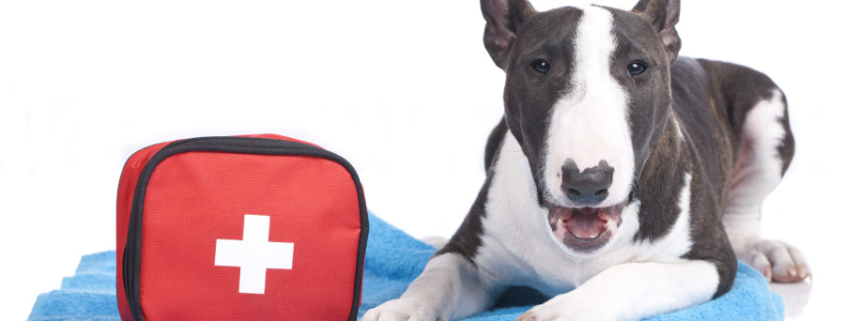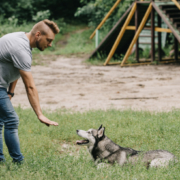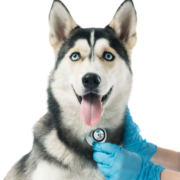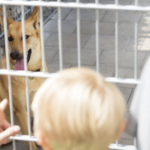Covid-19 has had many of us cooped up inside our homes or apartments for the past few months. And while this can turn any of us stir crazy, it can also be a stressful time for your dog who has had to adjust as well. Fewer walks and socializing can create depression for them too.
But as Summer hits a peak, more and more are heading outside to partake in activities that bring some normalcy back to our lives. Hiking happens to be a favorite of mine and has the luxury of largely being a haven from a virus that has done so much damage. Plus it allows us to take a few hours to get away from all that is happening in the world and decompress.
While taking your dog for a hike sounds like a safe, fun activity, there are some hazards along the way. It’s important to be prepared and take precautions so that you and your pet don’t end up in a sticky situation.
Take a First Aid Kit for You and Your Dog
Experienced hikers know that carrying a first aid kit is a must. But have you thought about your dog? Hiking Dog Co has put together a first aid kit for dogs that is great. This kit is small and can either be carried by you in your backpack or strapped to your dog if they are large enough.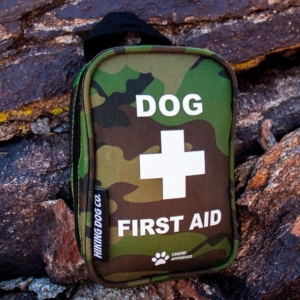
Here’s a short breakdown of some of the supplies and what they will do.
Elastic Bandage Roll – This isn’t your ordinary bandage that can stick to the skin. It’s designed to only stick to itself and not the fur. Saving your pet from painful and time-consuming experience when they need it removed.
Triangular Bandage – There are times where you might need to muzzle your dog. Perhaps they’ve got a wound and are constantly licking it and opening themselves to infection. Or you’re trying to clean out a wound and don’t want them to bite you when they feel the pain. This is, of course, a temporary solution until you can find a way to safety.
Tick Removers – First off, if you’re regularly hiking in areas with ticks, you will want to look into some prevention with a veterinarian. But you’ll also want to check them during rest and remove any that you see. But it’s important not to use your hands as they can spread diseases like Rocky Mountain Fever to you. That’s why a tick remover which is a uniquely shaped tweezer (called Tick Twisters by some) that can help with removing safely and cleanly.
Antiseptic Wipes – Following a tick removal, you’ll want to clean the area with some antiseptic wipes. These can be used by you too to keep your hands clean.
Antihistamine Tablets – Something I’ve never thought of before but a great idea is some antihistamine. This is essentially Benadryl at a low dose. Essential if your dog has an allergic reaction to a plant or something else while on your walk. Check with your veterinarian before hiking to make sure this is ok to administer to your dog.
Sterile Saline Wash – Unfortunately, if you’re hiking in rough terrain, there is the possibility of cuts to your dog. This should help you clean out the wound and give you some time to get them to a vet before infection sets in.
Emergency Blanket – A favorite of mine but good to bring one for your dog too. If you get trapped somewhere, these can save your life when the temperature drops.
Metal Tweezers – Great for removing thorns or painful splinters from your dog. I do know of a friend who’s dog got too close to a porcupine and paid the price.
There are some other great tools inside like sterile gauze, alcohol pads, blunt scissors, and an ice pack. They’re all kept in a handy pouch that is water resistant and will hold up to the elements. At this size and weight, there is no reason not to bring a first aid kit for your dog along with.
Some other tips I’ve learned when hiking.
Bring Along Water and Food
This has been a particularly warm Summer here so dehydration is a big issue. Dogs have a furry coat and don’t have the luxury of sweating as we do. It’s important to bring along plenty of clean drinking water and a bowl (collapsible bowls work great). Take regular breaks too. If you’re venturing especially far and there is a chance you could get lost, throwing a water purification tablet in your backpack is not a bad idea in case you have to drink from a lake or ravine.
Protective Booties
Some rougher terrain can be hard on your dog’s paws. Whether that’s some pointy rocks or just a snowy surface. Whichever it is, look into some protective options for their feet. And don’t skimp on this, there is a huge difference in quality between cheap and moderately priced boots.
Bring Some Doggy Bags
I hate when people just let their dogs poop on the trail and don’t bother cleaning it up. Other people are using it and no one wants to step in that mess. Just bring a few plastic bags and dispose of them when you’re done. It’s not hard.
Dog Towel
This is one I learned the hard way years ago. You’ll want something that can dry off your dog if it rains or they jump in some standing water. Especially if the weather is on the cool side.
Flashlight
I always carry one in my backpack if I’m going in the afternoon. Just in case that hike goes into the evening when the sun sets, I want something to help us navigate home.
Here are some hazards I’ve seen.
Plants
My dog loves to sniff, lick, and sometimes consume things he sees outdoors. That makes me hypervigilant on walks. Besides poison ivy and other irritants, there are burrs and poisonous plants that can make sick or even kill your dog.
Dirty Water
Again, my dog loves drinking from any pool of water he can spot. Outdoors tons of pathogens can wreak havoc on him. If they’re running toward that water to drink, it means they need some hydration. Time to whip out that water and bowl.
Heat Stroke
Just because you can manage a 90-degree day no problems, doesn’t mean your dog can. Spot excessive panting and know it is time for a break. Keep yourself in the shade when you can.
That’s about it when it comes to my experience hiking and what you should be bringing along. Hope everyone is enjoying this Summer and staying safe from the Covid-19 virus.

